This rare stone villa is an established and lovingly maintained home having been lived in year round for seven years. Whilst suited to a multitude of uses including home with art gallery, day spa or yoga studio attached the house currently generates exceptional income over a 10 month season purely by renting out the studio wing to independent travellers exploring the region.
Back at the tail end of 2010 I wrote an article on buying property in the koy lands, since then some things have changed, legal wise, and some things haven’t because people don’t really change! Anyway I thought it was time for an update on the article and here it is, edited to account for the new rules.
I tend not to write about buying real estate in Turkey on this site, it’s a massive and complex subject and when I write about it I do tend to have the feeling that I am, for want of a better phrase, pissing in the wind! Fifteen years experience of property in weird places tells me most people would far rather spend 15 minutes dreaming about a place in the sun than five minutes learning how to acquire one legally.
But the other day I read a (good) article in Zaman (English language newspaper in Turkey) by an American ex-pat who dreamt of buying an old Ottoman house in a village and turning it into a little guest house. The dream rapidly crumbled under the weight of the problems of buying in the villages. And the article, quite rightly, ended with a clear warning to those who consider the idea – be careful, be very careful!
I think it is essential to warn people about the issues peculiar to buying in the villages, but equally I think you need to go on to tell people how they can overcome the hurdles because it isn’t impossible and I have done it three times now and I still prefer it to buying bog standard houses in complexes and sites, mainly because buying in the familiar stamping grounds most foreigners stick to comes with it’s own problems that are often ignored due to a false sense of security.Now I have as much space as I like here because I own the website – ha, no sub editors – And I can rattle on a lot longer than the lady writing in Zaman, so here’s some information about buying property in the koy lands, it isn’t exhaustive, but it is relevant to non Turkish citizens and it is current as of today, July 2013, it may of course all change tomorrow!
What is a koy?
Koy is Turkish for village, and in most cases the koy rules covers the village itself and the surrounding farmland and gardens. Most villages are nuclei, tightly built around a crossroads or a mosque or a meeting place and the streets are narrow (the rule was, wide enough for two camels to pass abreast), the houses themselves have small kitchen gardens or courtyards and the villagers planted their main crops and grazed their animals in the fields around the koy and went back to the safety of the community at night.
The koy have a special place in Turkish law, they are run by an elected head man, the Muhtar, with his council of elders. Even now the Muhtar wields quite extraordinary power over planning, development and living in the village. He sets the water rates, decides who gets water and power, gives permission for extensions to homes and troubleshoots any disputes.
(If you want to know more about The Koy Laws there is an article I wrote in 2012 here – The Old Koy Laws – village guards, stinky fruit and be careful where you put that graveyard.)
I need to add a caveat here about planning permission, just for clarity – whilst the Muhtar has a lot of say in planning permission and can veto an application if he feels it isn’t for the good of the village he isn’t the only authority involved. A simple extension upwards he can just rubber stamp but if you are extending outwards or building a new property you still need to have any design passed by the planning gods in Aydin, you will need a geo survey and you still need to build it according to building regs – of course we have them! – and you need to use legitimate workers and prove national insurance was paid. If you are extending a property and it is outside of the original footprint on the tapu you will also need to go through the whole process of getting the final building passed and mapped onto your tapuIf you move to a village or want to move to a village you should introduce yourself to the Muhtar. If you are thinking of buying bare land and building anywhere near a village you really should introduce yourself to the Muhtar – he’s the one who is probably going to tell you to bugger off!
You often pay to join a village community. The amount you pay, and it varies a great deal, goes towards community projects like paving the streets, renovating water troughs and renewing dustbins. I paid 500tl when I first joined this village back in 2005; I still have the receipt somewhere, because everything is carefully receipted by the Muhtar who spends his life ensuring he is as pure as Caesar’s wife in the eyes of his village.
So the koy is a real democratic community, it houses the villagers, looks after the land around the village and its continuing existence is very important to Turkish culture.
Foreign individuals can now own legally registered houses in the villages. The “legally registered house” is the key bit if you want to own as an individual, it means exactly what it says, the building on the title deed must be a registered house, not stable, not shed, not storage, not ruin, it must be a residential property.
How can I own property in the koy lands?
Essentially you need to do your homework on the properties available to you because not all properties can be owned by individual foreign nationals.
When I first came here it was permissible for foreigners to buy any sort of property in the villages, and many did. And then the laws changed and you had to have a company to own property in the villages, so people formed shell companies under Turkey’s Foreign Direct Investment laws (I’m not going into detail on the FDI laws, I’d be here all day!) and did nothing but live in their properties and didn’t contribute to the economy. And then, the law altered slightly and you had to have a legitimate company where ownership of the property was part of the business you conducted. And then, last year, a new ammendment came into force that allowed foreign ownership of registered houses in the villages but placed restrictions on building plots and agricultural land.
None of the changes to the law ever affected me because all that time the rules were changing I was quietly going about my business. I set up a company to build a boutique hotel in the village and that was a working company. When I set up a company to buy my current house the work of the company was building restoration and tourism (amongst 300 other things!) so the company did what it said it would do, it restored this house and now I rent out part of it allowing people to experience the village and my company also owns further restoration projects. Both of my companies, including this current one, have employed people, paid SSK, paid taxes and operated.
However the properties I bought were always legitimate, registered, legal village houses (because I like having a Plan B) and so even though I always own property through a company I do so as a personal choice and I can still sell my properties to foreign individuals because they qualify under the new ammendment to the law.
So what about the properties themselves?
Now that foreigners can own houses in the villages without forming a company things are a little easier than they were but the properties themselves will still present a variety of common issues.
I’m going to mainly ignore the whole issue of buying bare land and building because the rules are complex and whilst it is possible to buy tarla (agricultural land) and building plots the permissions are very area specific and there are complicated rules attached. Suffice to say in my valley at least you are going to struggle to build anything outside of the village boundary unless you are very lucky or very sensitive to local society and what it wants. This is a farming community, the resources it has are reserved for crops and whilst new building isn’t banned per se it would be nearly impossible to get and having seen off mineral prospectors in the recent past the village understands the heritage here and the self sufficient families are what will keep it safe from rampant exploitation.
Already built houses for renovation or habitation in the villages tend to come with two issues – deed (tapu) issues and ownership issues.
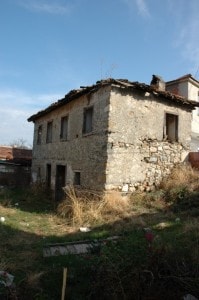
Stable or House? Actually neither, it no longer exists, it got knocked down! I tried to buy it years ago but the owners couldn't agree on a price, it is now a pile of rubble!
If you want to be particularly picky – as I was with my house – you can trace how long it has been an inhabited house in the old ledgers at the Cadastral. For example, my title deeds have been traced back to 1958 when Ataturk’s mapping engineers arrived in the village as part of their herculean mission to map the whole of Turkey onto new title deeds from the old Ottoman deeds. At that moment in 1958 this property I live in was an inhabited house on 208m2 of land. That’s about as rock solid as it gets.
Once you establish that the house you want to buy is actually a house you then need to see how many owners it has and here we come across the second problem. The multiple owner syndrome.
Due to Turkey’s complex inheritance laws it is tough to find an old property with a single owner to negotiate with. Properties are often owned by multiple family members in all corners of Turkey and even the world, and you need the agreement of all of them before a purchase can be agreed.
With all of my village purchases I was dealing with one owner but even that can be fraught as when we were buying the property that became a boutique hotel the owner’s brothers came along to the tapu office at completion of the sale to be sure she was getting the best price and at the last minute it looked like it could all go wrong.
That is the fundamental problem with multiple owners, or indeed the families of individual owners, someone will always think they can get a better price for the property, especially if the buyer is a foreigner (all of whom are very very rich!). And so negotiations can flounder because Brother A went to the tea shop to celebrate selling a crappy old house and his mates told him he was a fool to accept the offer, he could get more, whilst Brother B who really wants to get married will take any offer given. Brothers A and B will normally end up fighting in the street about it and the whole thing falls apart.
I have been lucky all three times, but then whenever I was buying I was taking my time, I wouldn’t spend any money on anything until everything was signed, I would go from agreement to signing in a day (which you can’t do now) and I had spent weeks and weeks finding the right people to buy from in the location I wanted. If you want legal you have to put the legwork in, a week long buying trip in the koy lands is a waste of time and likely to result in ulcers as all your potential purchases fall through once you go home or you discover some little problem like the house you are in the process of buying is part of a larger tapu showing two houses neither of which are the one you think you are buying (that’s a real example!).
So why buy if it’s so hard?
I could just say read the rest of this site, but that would be only half the picture. I bought and renovated property in the koy lands for so many reasons it would take forever to explain and a lot of it is to do with me and how I see the world.
I believe that doing difficult and complex things makes life worth living, I believe old houses should be saved not knocked down and rebuilt in the horrible hollow tugla brick, I believe the lifestyle here taught me things I needed to learn, I believe if it was easy everyone would do it and it wouldn’t be so special.
And as to living in the village, I got to meet amazing people and really learn about a way of life that in many other countries is passing into history. I found a peaceful place, where you can hear yourself think, and I found the real Turkey away from the resorts and I got to bring other people to see it and experience it and that’s important to me.
This all sounds very complicated, is there an easier way?
Other than buying my house – not really!
If you want to do it, do it properly. It is possible, it just requires you learn a few things, have a sound reason for doing it and are patient. You also need to take advice from the right people – not me, I don’t do free advice anymore, I find people rarely listen and the whole thing puts my blood pressure up. At this juncture also please see – Weird Advice for living in Turkey – you’re probably too old to be adopted
If you do make it over the hurdles to owning in the koy lands you will own something special, something you really worked to acquire, something very few foreigners have managed successfully and hopefully something that will still be here long after you have gone. Because when the complexes on the beaches have crumbled to dust and the summer houses have sunk into the marsh ground they were built on and the tower blocks have fallen in the quakes to come the stone houses in the koy lands will still be here…..six hundred years and counting so far.
If you are interested in owning an income generating property in a village in Turkey please see our house for sale at Kirazli Village House for sale
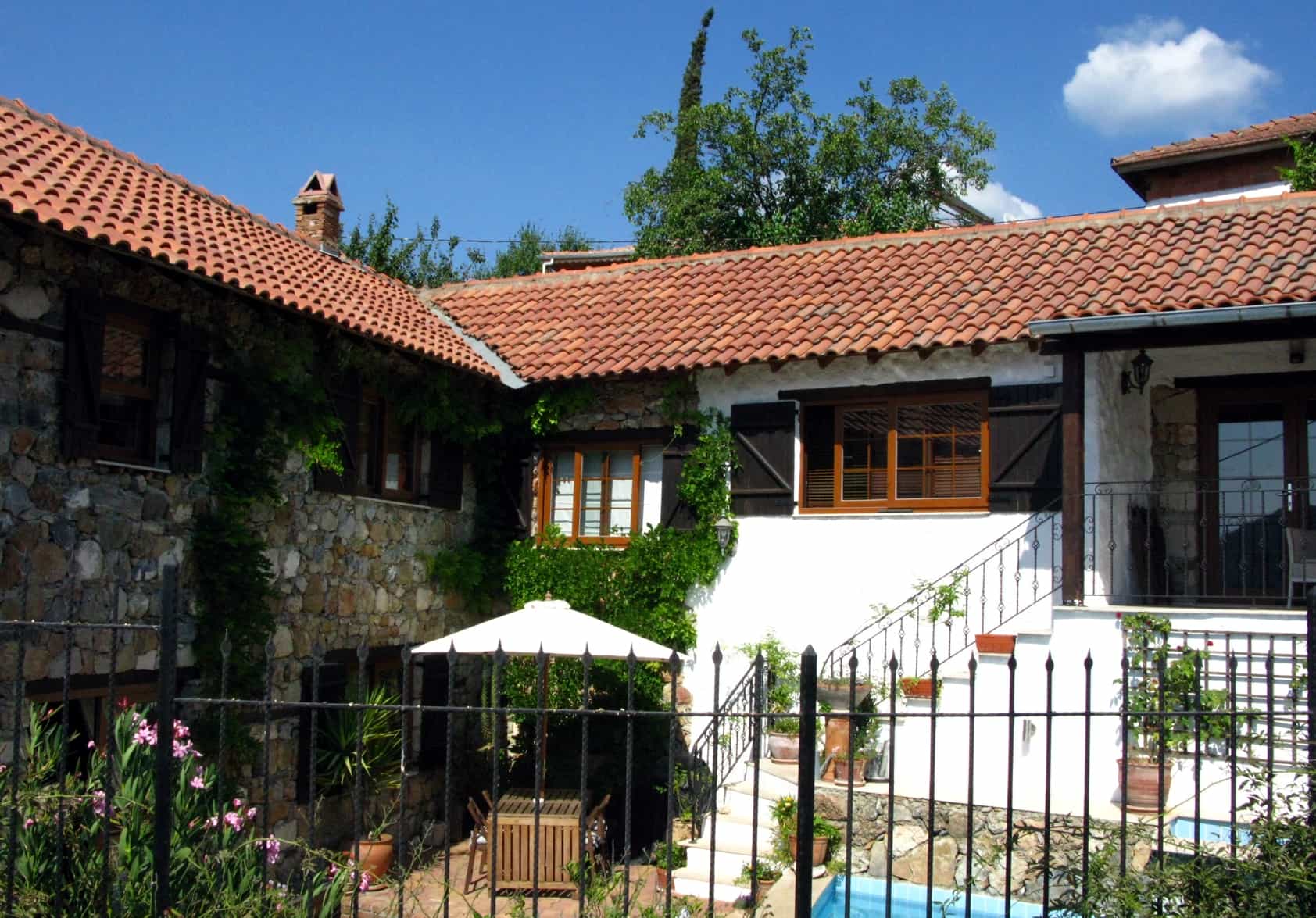
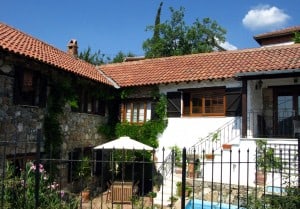
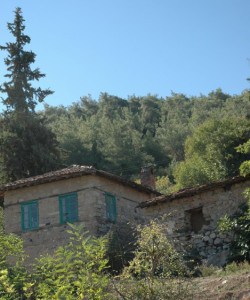
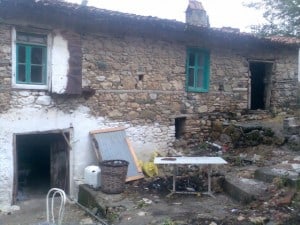
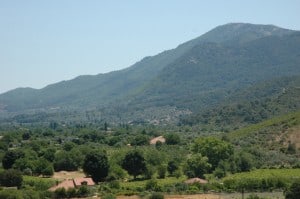
Thanks for this update. I was wondering about the changes. I feel qualified to comment as I live in a small complex in Bodrum in the winter and a village house in the summer. Village wins hands down with me especially because I’m not tied to any rules randomly thought up by the other complex owners. I also prefer the sounds of cows and donkeys to motorbikes, cars and nightclubs.
Tell us more about living in Bodrum. I have been to Istanbul, but never Bodrum. I have always wanted to go there to visit the maritime museum and lab, and to make a few dives. I have lived in villages in the Balkans while working U.S. based contracts so I think I have an idea what it would be like.
Hi David, I don’t actually live in Bodrum, I live about 130km away near Kusadasi. Bodrum has some interesting dives including some created wrecks. The dive centre we dive with normally organises a Bodrum dive trip once a week to dive on an old Dakota that has been sunk just off Bodrum and I’ve been meaning to go visit the underwater archeology museum for so long, I just can’t seem to get round to it.
Living here is amazingly easy, mainly because the village has been here so long everything works, the transport is good, the utilities are good and unlike the coastal resorts stuff does’t close at the end of October. It is a remarkably balanced life, we have the city of Izmir 40 minutes away, the coast in 15 minutes and yet peace and quiet all year round. Here are some links to a couple of articles about living here in the village – This is not just olive oil and Village People – I really like that last one, I had forgotten I wrote it 🙂
If you’ve got any questions about living here please feel free to drop me a message, there is a link on the right panel to send my a short message.
Karen
Comprehensive and informative as usual, Karen. Having seen your house “in the flesh” I was mightily surprised when I compared the “before” picture in your blog. The house is unrecognisable from its original state. Keep it up.